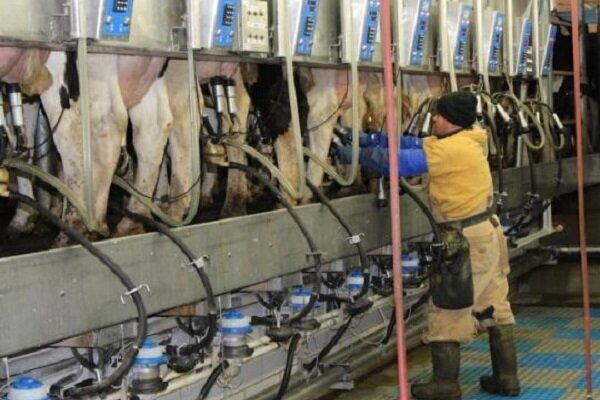Effective Employee Management
The average number of dairy cows per farm continues to increase.
Ironically, as dairy profit margins become tighter, many farms add cows and production to generate minimum levels of income needed to stay in business.
As cow numbers increase, so do labor needs and as a result, most dairy farm owners find themselves in the position of managing employees.
Employees
Employee management is another skill set that is quite different from the skill set required to milk cows.
I recently read several articles on employee management — some dairy related and others not — and all of them had some good ideas regarding how to work with and manage employees more effectively.
My summary of those articles includes four practices; develop good job descriptions, provide effective training programs, improve morale and address productivity issues.
Job description
A good place to start with employee management is the job description.
It might seem simple to you; milk the cows what more do I need to say?
However, spend some time analyzing all the steps involved in the task.
The job description begins with a job title that is specific and provides an idea of the expectations required of the employee.
Next define the knowledge (level of experience, degree, certificates, training etc.), skill set (measurable and/or demonstrative) and abilities (team player, self-starter etc.) needed for the job.
An article in the Harvard Business Review, entitled How to Teach Employees Skills They Don’t Know They Lack, referenced data that said employees are “unconsciously incompetent” in typically 20 percent to 40 percent of areas critical to their performance.
Managers need to provide and design training programs that engage employees and empower them to admit what they don’t know.
Employees may be doing the job adequately, but feel unsure of what they are doing, or why they are doing certain actions.
Skills
Managers need to recognize differences in skill levels and competencies between employees and provide training that allows the employee to understand the skills required and feel confident about performing the required task.
Managers need to build a culture of continuous improvement. Part of this is to track errors and mistakes and then openly discuss those errors and mistakes.
Why did this happen? Often it is not intentional but the result of knowledge or skill gaps.
Identifying and providing training to address mistakes and errors is a better solution than blaming the employee and seeking some form of punishment.
Good managers have a high employee retention rate. If your farm is experiencing a high employee turnover rate, it might be time to look in the mirror.
People often leave a job due to bad management. Good managers build employee morale and keep workers happy.
Turnover
In an article entitled Six Things That Kill Morale, author Travis Bradberry lists the following as practices that create job dissatisfaction, and lead to high employee turnover.
- Overworking people.
- Holding people back: Good managers provide employees with opportunities for advancement and ways to improve or expand their skill set.
- Playing the blame game: Good managers do not publicly shame or place blame on an employee. The better strategy is to create a team atmosphere, discuss mistakes and focus on solutions.
- Frequent threats of firing: This makes people feel like they are disposable and depends upon fear as a motivation to work better. This is not an environment that makes an employee feel valued or a part of a team.
- Not letting people pursue their passions: Good managers are open to allowing employees to grow and expand their focus and interests. Productivity increases in these circumstances.
- Withholding praise: Good managers look for opportunities to recognize employees for a job well done, and for ways of rewarding employees.
Evaluate
There are times when employee performance is not what it should be. There are too many mistakes and/or productivity is low. In this situation you have three options as a manager, do nothing, investigate, or blame the employee.
As a manager, investigating the performance issue sooner is better than dealing with it later.
A normal reaction is to blame the employee, but even if the blame is well founded, that will not solve the problem.
Communication
Investigating the reason for poor employee performance requires non-threatening communication with the employee.
Some communication keys are to ask questions and to practice active listening.
The goal is to create an environment where the employee can see that the manager wants to solve the problem and help them become more proficient and effective.
Effective employee management does not happen by accident. It requires recognizing our shortfalls as managers and the need to develop new skill sets.
It may push us out of our comfort zone, but the results in terms of increased employee competency, happiness, and retention are worth it.



